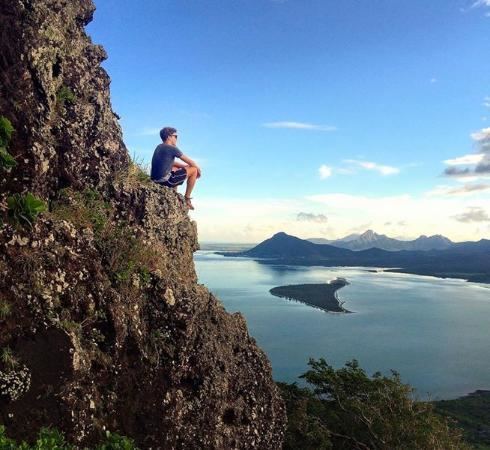Criteria iii, vi UNESCO region Africa | Type Cultural Reference 1259 UNESCO World Heritage Site inscription 2008 | |
 | ||
Similar Flic‑en‑Flac, Mauritius Island, Sir Seewoosagur Ramgool, Île aux Cerfs, Black River Gorges National | ||
Le Morne Brabant is a peninsula at the extreme southwestern tip of the Indian Ocean island of Mauritius on the windward side of the island. It is highlighted by an eponymous basaltic monolith with a summit 556 metres (1,824 ft) above sea level. The summit covers an area of over 12 hectares (30 acres). There are many caves and overhangs on the steep slopes. It is largely surrounded by a lagoon and is a well known tourist attraction. It is also a refuge for two rare plants, the Mandrinette and the Boucle d'Oreille.
Contents
Map of Le Morne Brabant, Mauritius
The peninsula was notorious in the early 19th century as a refuge for runaway slaves. After the abolition of slavery in Mauritius, on 1 February 1835 a police expedition traveled there to inform the slaves that they had been freed. However, the purpose of the expedition was misunderstood and the slaves leapt to their deaths from the rock. Since then the date is celebrated by Mauritian creoles as the Annual Commemoration of the Abolition of Slavery.
The peninsula of Le Morne benefits from a micro-climate. Le Morne Brabant Mountain was submitted to the candidate list of the World Heritage sites in 2003. In 2008, the nomination process concluded when UNESCO inscribed the site on the World Heritage List.
Cultural and aesthetic impact
With Aapravasi Ghat, the first World Heritage site of Mauritius, Le Morne highlights the historical significance of slavery and indenture, two labour systems that shaped modern Mauritius. It is a unique conjunction in the Indian Ocean and abroad, and UNESCO has promoted a symbolic meeting of those two systems, to foster a better understanding among the descendants of both the slaves and indentured labourers in the colonial plantation system.
Poet Khal Torabully, who developed the concept of coolitude, springing from intercultural strata of his native island, dreams that the memories of indenture and slavery will enhance debate on identity in Mauritius and elsewhere. For him Le Morne Brabant and the Aapravasi Ghat have to be considered as two characters of a collective narrative that will enhance openness and exchanges between cultures and dispel exclusive and sectarian views of identities.
